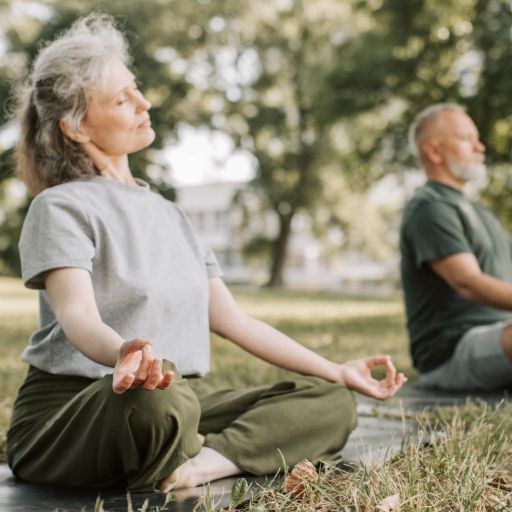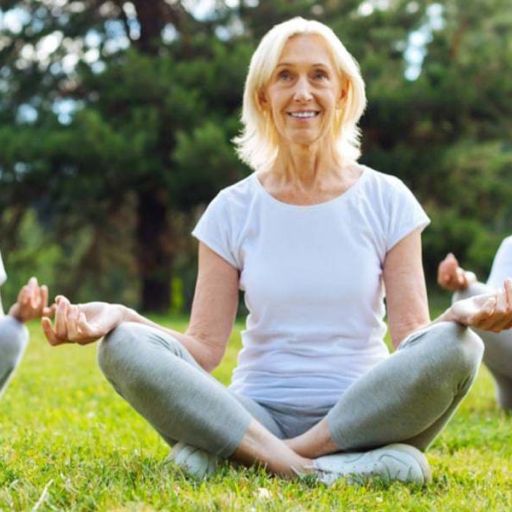What to do When Your Auto Insurance Claim is Denied?
What do you Know About Credit Scores!
Weighing the Pros and Cons: Using a Personal Loan to Tackle Credit Card Debt.
What You Need to Know About Secured Credit Card Deposits!
Insuring Your Peace of Mind: An Overview of Common Types of Insurance.
Unveiling the Truth: Debunking Home Insurance Myths.
As we age, the physical and mental health of seniors becomes increasingly important, especially during the fall and winter months. Cold weather and lack of sunshine may lead to physical discomfort and low mood in many older people.
Yoga courses for the elderly abroad, focusing on physical and mental balance, emphasize the enhancement of quality of life through suitable yoga postures, scientific concepts of health maintenance, and the maintenance of mental health.
In this article, we will discuss these three themes in depth to help the elderly better cope with the challenges of the fall and winter seasons.
When practicing yoga, seniors should choose simple, gentle and easy-to-master poses. The following yoga poses are suitable for the fall and winter seasons to help seniors stretch their bodies and enhance their flexibility.
Cat-Cow Pose
Action: Hands and knees on the ground, palms shoulder-width apart, knees hip-width apart. When you inhale, raise your head and chest, back concave (Cow Pose); when you exhale, lower your head and stomach, back arched (Cat Pose).
Benefits: The Cat and Cow Pose can effectively stretch the spine, increase spinal flexibility, promote blood circulation, and relieve tension in the back and neck.
Tree Pose
Action: When standing, put your right foot on the inside of your left leg to keep your body balanced. Keep your arms folded in front of your chest, look straight ahead, and remain stable.
Benefits: Tree Pose not only enhances leg strength and balance, but also helps to improve concentration and stabilize mood.
Seated Forward Bend
Action: Sit on the ground, legs straight, raise your head when you inhale, bend forward when you exhale, and try to touch your toes with your hands.
Benefits: This action can stretch the legs and back muscles, promote blood circulation in the internal organs, help digestion and reduce anxiety.

Easy Pose
Action: Sit on the ground, cross your legs, keep your spine straight, put your hands on your knees and meditate with your eyes closed.
Benefits: Easy Pose helps to relax the body and mind, cultivate a sense of inner peace, and enhance concentration and self-awareness.
Bridge Pose
Key Points: Lie on your back, knees bent, feet flat on the ground, arms on both sides of the body. Inhale and lift your hips to form a bridge, hold for a few seconds and then lower slowly.
Benefits: The bridge pose helps to strengthen the back, leg and abdominal muscles while improving blood circulation and relieving tension.
Supine Spinal Twist
Key: Lie on your back with knees bent and feet flat on the ground. Lower your knees to one side, keep your shoulders on the ground and turn your head to the other side.
Benefits: This movement can stretch the spine, relax the lower back muscles, and help eliminate fatigue.

In the fall and winter seasons, the concept of health maintenance should be combined with the laws of nature and the needs of the body, the following are some important health maintenance concepts:
Conform to nature
- In the fall and winter season, the temperature drops and the sunlight decreases. Elderly people should choose a warm environment for yoga practice to keep their bodies warm. It is recommended to practice indoors or in a sunny place to avoid too cold air blowing directly.
Adjusting Diet
- With the change of seasons, diet should be adjusted accordingly. Increase the intake of warm foods, such as red dates, cinnamon, beef and mutton, which can enhance the body's internal heat and strengthen the immune system. At the same time, maintain a varied diet to ensure adequate intake of vitamins and minerals.
Maintain regularity
- Yoga practice should be regular, try to choose a fixed time and place. A regular routine not only enhances the body's ability to adapt, but also helps to calm and stabilize the mind.
Emphasize sleep
- During the fall and winter months, many seniors may face insomnia. Practicing yoga and meditation can help relax the body and mind and improve sleep quality. It is recommended to perform some relaxing stretches and meditations before going to bed, which can help to get into a deep sleep.
Breathing exercises
- Deep breathing is an important part of yoga, and by adjusting your breathing, you can relieve stress and anxiety. Elderly people can try the following simple breathing exercises: find a quiet place, inhale deeply, try to make your abdomen bulge, hold it for a few seconds, then exhale slowly and feel your body relax.

Mental health is crucial for the elderly. Yoga provides positive help in maintaining mental health:
Relieving anxiety and depression
- The physical movement and meditation practices in yoga can effectively reduce symptoms of anxiety and depression. By focusing on the present moment, older adults are able to reduce their worries about the future and improve their mental stability.
Increased Confidence
- As their bodies become more flexible and their abilities increase, so does their self-confidence. Through continuous practice, they can feel their own changes and growth, thus enhancing their positive attitude towards life.
Promotes socialization
- Participating in yoga classes or community activities allows older people to come into contact with more like-minded people and increase social interaction. The building of such relationships helps to reduce loneliness and enhance a sense of belonging.
Cultivate inner peace
- The meditation part of yoga can help older people better recognize themselves, accept changes in their lives, and cultivate a sense of inner peace. Spending some time for meditation every day can help the mind to have a moment of peace.
Build a positive attitude towards life
- Through yoga practice, seniors can develop a positive attitude towards life. In the face of difficulties and challenges in life, they will be more relaxed, better able to adapt to changes and maintain an optimistic mindset.

In the fall and winter seasons, many yoga studios and communities will offer yoga courses specifically for the elderly. These courses usually focus on the following aspects:
Course content
- Senior yoga classes usually include a relaxing warm-up, gentle yoga poses, breathing exercises and meditation. The instructor will adjust the intensity and difficulty of the class according to the physical condition of the older person to ensure that each participant can keep up.
Safety
- Safety is of utmost importance in yoga practice. The instructor will remind the students to pay attention to the correctness of the postures to avoid injuries. Elderly people should practice in a comfortable environment to avoid falling and other accidents.
Small Classes
- Small class size allows the instructor to pay better attention to the needs of each student and provide personalized instruction. This format also helps to enhance the interaction between students and build up a good social relationship.
Focus on Feedback
- At the end of the course, the coach will collect feedback from the students and continuously adjust the course content according to the needs of the students in order to improve the learning effect.
In the fall and winter seasons, the physical and mental health of the elderly is particularly important. By choosing the right yoga poses, following scientific health care concepts and paying attention to mental health, seniors can keep their bodies and minds warm and energized during the cold season.
Yoga is not only a kind of exercise, but also an important way to promote the healthy life of the elderly. Let's enter the world of yoga together, pay attention to the health of the elderly, and help them welcome a better life.